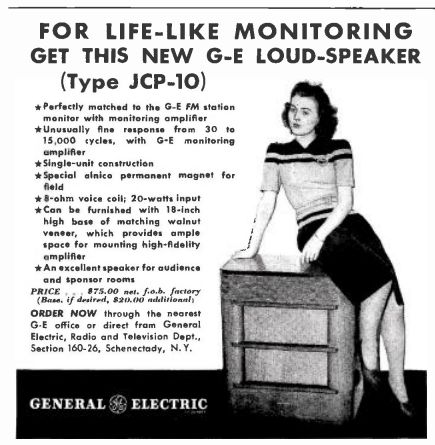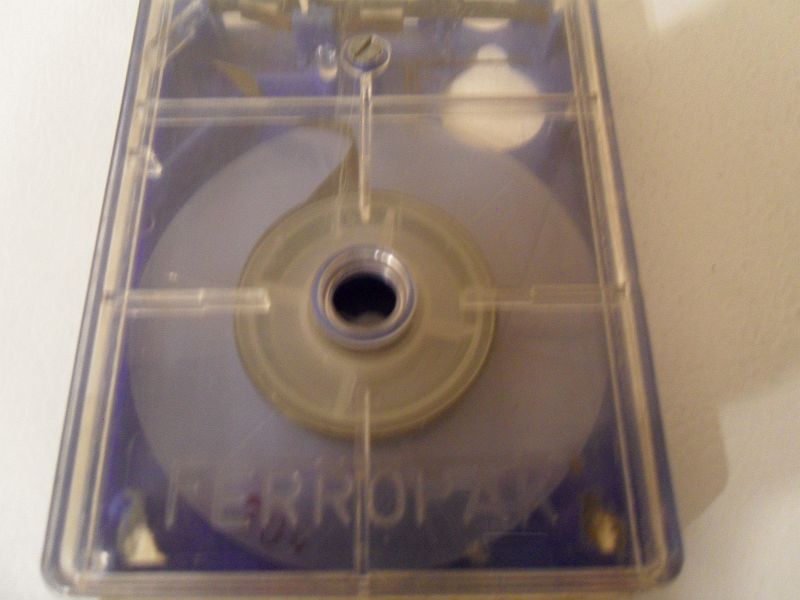- RadioActive
- Moderator
 Offline
Offline
Instant Replay: Invention Attention - Broadcast Tech You Never Saw
It’s astounding to think that a single computer using the right software can now run a radio station – or several stations – without any human intervention. Things weren’t so easy even a couple of years ago, when reel-to-reel was the real-to-real thing.
(I can’t tell you how many years I sat there with little pieces of tape on my lap, splicing something together. It’s a lost art but when it worked perfectly, there was an immense sense that you’d done something amazing.)
Which is why you can only wonder what those who came before us were thinking about when the latest and the greatest technology presented itself and promised them an easier load.
Or not.
Here’s a look back at some of the stranger and often lesser known inventions that somebody used somewhere. Although maybe not for long.
How To Make An Aircheck In 1943
There was no tape back then, so if you wanted a recording of something to play back more than once, you literally had to make a record of it. Sixty-two minutes of it per side at a time. And if you made a mistake – you had to start over.

Take Me Out To The Ballgame – Without Actually Being There
It’s hard to imagine in the era before broadcast phone lines and satellites, but when radio stations couldn’t be at a ball park, they simply imagined one. Baseball recreations were common and to do them successfully, of course, you’d definitely need the product below. Which leads to the question: what does a ground out sound like?

Watch Your Speed!
Here’s a product from 1944 – although I thought a Stroboscope was something my doctor used on me during my last physical. It seems designed to tell you how fast your turntable is going. Thank goodness for the handy instructive folder or you might never know!

“Horns” Of Plenty
So you own one of those newfangled radio or record player things in 1922. O.K., but how are you going to hear it? Speakers are the people who talk at a dinner. Headphones are still in their infancy, so what do you do? Well, get on the “horn” of course. There were several different kinds that boosted sound off a radio. Here are two competing brands. Both were, you should pardon the expression, tooting their own horns.


“Distant” Memories
If you think DX is a big deal for some now, imagine a time when there were so few stations and so little interference that getting a distant signal was relatively easy – and something to base an entire line of radios on. Like this one that was on the market in 1924.

Down To The Wire
Forget those silly records. It’s 1948 and it’s time to get all those prerecorded spots and shows on a wire recorder. And the Magnatone may be just what you’re looking for. It’s not quite a tape machine – but we’re getting there.

Who’s That Calling On The Califone?
This appears to be something advertisers could use at a client’s office to play back a commercial for approval. At least I think that’s what the Califone was. What we do know is it was “easier to carry than a portable typewriter.”

“Tape” Measures
If it seemed like tape – and the recorders to play them on – would never arrive, help was on the way as far back as 1949. Although I’m not sure I’d want to edit on this one.

By 1960, they had improved them considerably. And it only took four flashlight batteries!

Or perhaps you’d like something even smaller

From 1960:

I’m not sure how politically correct the name of this product would be in modern times but in 1960, it wasn’t a problem. (And I’d love to see those “science fiction accessories” they refer to.)

And of course, you had to have something to actually record on them.

A Real “Disc” Jockey
It’s easy to think of CDs and DVDs as a modern invention but they were recording on discs by 1959. And this one insists it lasts longer than those new fangled tape thingies.

A “Remote” Possibility
Going on air from somewhere other than the studio? Don’t forget to take this along. If you can lift it.

Once you’re on scene of a remote, you have to allow the crowd to hear what you’re broadcasting. Which brings us to March 1942:

Meanwhile, back at the ranch, there’s a new fangled transistorized audio board waiting.

All of which you could use to play back what looks to be a competitor for Muzak.

Putting The “Cart” Before The Source
Into a more modern era came one of my favourite broadcast inventions – the cart machine. From its earliest days, it was a revelation – you’d never have to cue up a reel-to-reel tape or a record again. Unless, of course, some careless idiot stopped a cart in the middle.
It looked for all purposes like an 8-track tape. But it was very different. The tape inside was 7”, there was only one track, it was broadcast quality and it was built to cue itself to the beginning to be ready to instantly play whenever you started it the next time. The one below is the only one I still have. It’s from around 1974 and only had enough tape for about a minute – it held a short jingle.

This playback machine is from 1965:

By 1971, they were a lot more sophisticated.

And of course, once you got all those carts, you needed a place to put them.

Big Screen TVs – from 1943!
But it wasn’t just radio. The evolution of TV was happening right before our eyes – which is where you’d expect TV to develop. And forget HDTV and 56” screens – they won’t be here for another 50 years. Instead, enjoy this brand new projection TV, which promises screen sizes of – are you ready? – 15 – 20 inches. Actually, this is pretty amazing considering there really were almost no TV stations on that far back.

Let’s Go To The Videotape!
In the early days of TV, it was either go live or record it on inferior kinescope (which was a film camera aimed at a television screen.) And despite taking up a full room, the invention of videotape changed the industry forever.

Although getting it to a TV station took some doing.


Pay TV Doesn’t Pay
We’ve talked about The Telemeter before. It was a weird contraption that allowed you to watch special Pay TV programming, as long as you kept putting enough change in the meter. It was tested out in Etobicoke in the early 1960s, and it wasn’t long before its backers discovered audiences there didn’t want to pay for Pay TV. At least not yet.

Out K-Tel-ing K-Tel
Not sure if this predates K-Tel, but the next-to-last last exhibit in this bizarre museum is supposed to make it easier for you to find that record you need to put on the air on the fly. From 1955:

The “Ties” That Bind
And finally, the perfect gift for the salesman trying to sell a reluctant client on his radio station. It’s amazing they’re still not around today!

Next week: The Amazing Things You Never Knew About Local Radio & TV
- splunge
- Member
 Offline
Offline
Re: Instant Replay: Invention Attention - Broadcast Tech You Never Saw
very cool! That Ampex looks familiar.
In 1989 i was a "producer" for a saturday night vt radio show. I had to cue as many as SIX reel to reels to be played in order, and included one with the vt. if i was short for time, i'd get out the old razor blade and splice the VT up to hit the midnight BN feed.
Also, my first radio gig was to create new carts for the station based on track length.... 30s for spots, and 90s + 120s for the newsroom. I think i billed based on run time. it paid enough to get me fries at the school caf. Still have the bulk eraser!
Last edited by splunge (July 20, 2019 11:34 pm)
 1 of 1
1 of 1